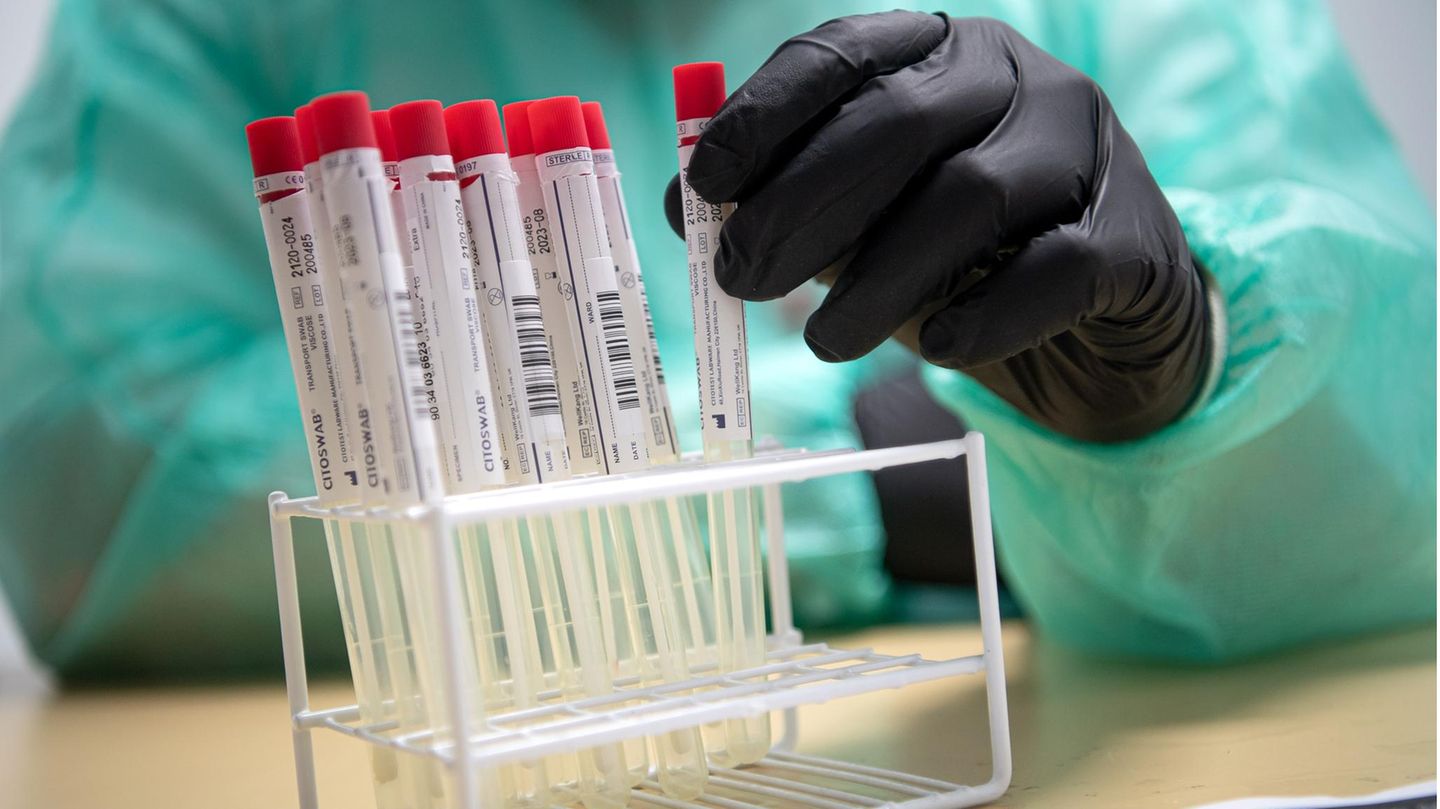After the RKI reported records for the seventh-day incidence for three weeks in a row, the numbers are falling again slightly. Medical representatives have not given the all-clear.
It almost sounds too good to be true: Has the rapid deterioration of the corona situation in Germany already slowed down? An indication of this could at least be read from official data from the Robert Koch Institute (RKI). Accordingly, the number of new infections transmitted within a week has even decreased slightly recently. But the values are likely to be deceptive. Because both health authorities and test laboratories are sometimes at the limit.
The official numbers
The health authorities in Germany recently reported 67,186 new corona cases to the RKI within 24 hours – about as many as a week ago. The nationwide seven-day incidence fell for the second time in a row. The RKI gave the value of new infections per 100,000 inhabitants and week on Wednesday morning as 442.9 (previous week: 404.5; previous month: 118.0). On Monday a high of 452.4 was reached, on Tuesday the value was slightly below at 452.2.
The so-called 7-day R-value – a kind of contagion indicator – is currently comparatively low at 0.89. An R value of 0.89 means that 100 infected people theoretically infect 89 other people. The R-value represents the occurrence of the infection about 8 to 16 days ago. If it is consistently below 1, the number of cases will decrease. For comparison: a week ago the RKI gave the value as 1.01.
Looks good – but it may not be
It is unclear whether the incidence and R-value still reflect the actual infection trend. It would be conceivable, for example, that the high number of positive corona evidence would push the recording and reporting system to the limit. The RKI initially did not want to comment on the current incidence values at the request of the DPA news agency and referred to its weekly report on Thursday evening. It is noticeable that the incidences reported by the RKI have fallen in almost all federal states compared to the previous day – and not just in some of the severely affected. The number of new infections per week and 100,000 inhabitants differs greatly between the federal states: According to RKI figures, Saxony stood at 1209.4 on Wednesday, Schleswig-Holstein at 153.1.
Overtaxed health authorities
Many health authorities are currently no longer able to keep up with the processing of positive corona evidence. “I assume that the reported numbers are only part of the positive evidence,” said Ute Teichert, chairwoman of the board of the Federal Association of Doctors in the Public Health Service (BVÖGD), of the DPA. The health authorities can therefore – with regional differences – no longer pass on incoming reports of corona cases in a timely manner, an under-recording is the result. This calls into question the validity of the current 7-day incidences.
The health authorities need more staff in view of the high number of infections, said Teichert. “Something has to happen now. I’ve been saying that for a long time, but now it’s time to repeat it clearly.” Contact tracking and the ordering of quarantine are also currently severely restricted.
Testlabore am Limit
The Association of Accredited Laboratories in Medicine (ALM) warned that laboratories in some regions are “simply at the limits of what is affordable” when it comes to evaluating corona tests. These included Saxony, Bavaria, Baden-Württemberg and Thuringia. “There is a risk that if the workload is close to or regionally above the maximum limit, even with minor failures of staff or devices, the diagnosis runtimes will increase to several days, which must be avoided at all costs,” said Evangelos Kotsopoulos from the ALM board on Tuesday. According to ALM, the test capacities cover medical needs, but there should not be any “” consumption “for subordinate questions”.
The situation in the clinics
“There can be no question of the all-clear,” said Gerald Gass, chairman of the board of the German Hospital Society (DKG), of the DPA. “Our own occupancy figures still show an increasing number of patients who tested positive in the normal and intensive care units. This week there are 16 percent more Covid patients in the hospitals than in the previous week and we have been recording this development for around two months. ” In the current situation, there are reporting delays both at the clinics and at the health authorities. Background: The daily updated RKI numbers on the incidence of hospitalization – i.e. hospital admissions per 100,000 inhabitants per week – had meanwhile fallen.
The number of Covid patients treated in the intensive care units continues to rise steeply. It has more than doubled for adults within a month, to more than 4600. The record value was reached at the height of the second wave in early 2021 with more than 5700.
Many dead
The number of corona deaths reported within one day has reached the highest level in nine months. The health authorities reported 446 cases of people who died of or with corona to the RKI within 24 hours. A higher value was last reached on February 20 (490). In view of the current value, it should be borne in mind that the number of deaths is delayed compared to the number of new infections, as some time elapses between infection and death. Even higher values are likely to be achieved in the coming days.
At the moment, the number of corona deaths transmitted daily is less than half as high as at the height of the second corona wave at the end of last year – even though there are currently significantly more infections than back then. Experts attribute this to the positive effect of vaccination, which provides effective protection against serious disease.
Source From: Stern




